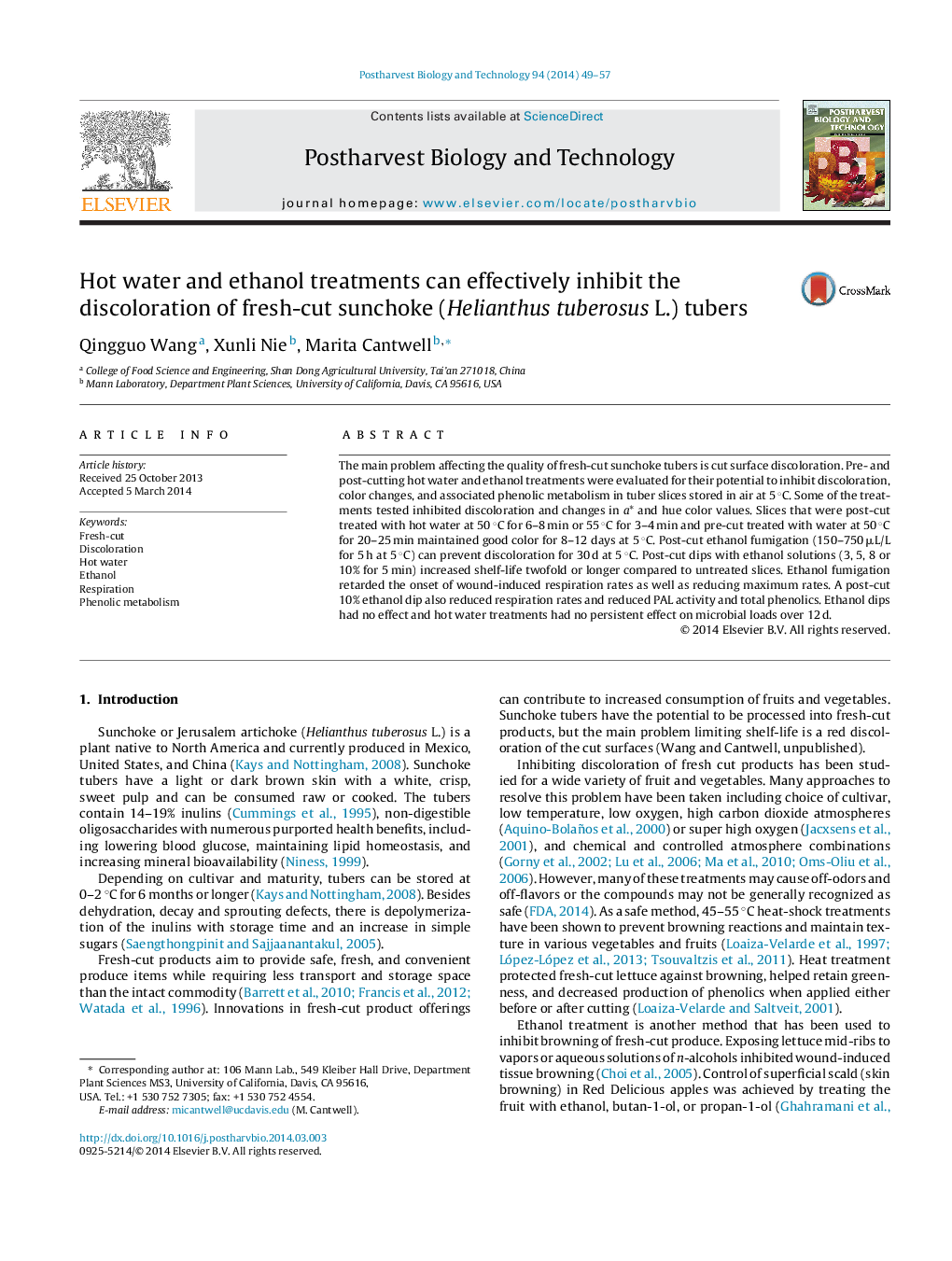| کد مقاله | کد نشریه | سال انتشار | مقاله انگلیسی | نسخه تمام متن |
|---|---|---|---|---|
| 4518278 | 1625000 | 2014 | 9 صفحه PDF | دانلود رایگان |

• Hot water or ethanol treatments extended the shelf-life of fresh-cut sunchoke tubers.
• Most suitable post-cutting hot water dips were 50 °C for 6–8 min and 55 °C for 3–4 min.
• Pre or post-cutting ethanol fumigation or post-cutting dips reduced discoloration.
• Ethanol treatments also reduced respiration rates, PAL activity and total phenolics.
The main problem affecting the quality of fresh-cut sunchoke tubers is cut surface discoloration. Pre- and post-cutting hot water and ethanol treatments were evaluated for their potential to inhibit discoloration, color changes, and associated phenolic metabolism in tuber slices stored in air at 5 °C. Some of the treatments tested inhibited discoloration and changes in a* and hue color values. Slices that were post-cut treated with hot water at 50 °C for 6–8 min or 55 °C for 3–4 min and pre-cut treated with water at 50 °C for 20–25 min maintained good color for 8–12 days at 5 °C. Post-cut ethanol fumigation (150–750 μL/L for 5 h at 5 °C) can prevent discoloration for 30 d at 5 °C. Post-cut dips with ethanol solutions (3, 5, 8 or 10% for 5 min) increased shelf-life twofold or longer compared to untreated slices. Ethanol fumigation retarded the onset of wound-induced respiration rates as well as reducing maximum rates. A post-cut 10% ethanol dip also reduced respiration rates and reduced PAL activity and total phenolics. Ethanol dips had no effect and hot water treatments had no persistent effect on microbial loads over 12 d.
Journal: Postharvest Biology and Technology - Volume 94, August 2014, Pages 49–57